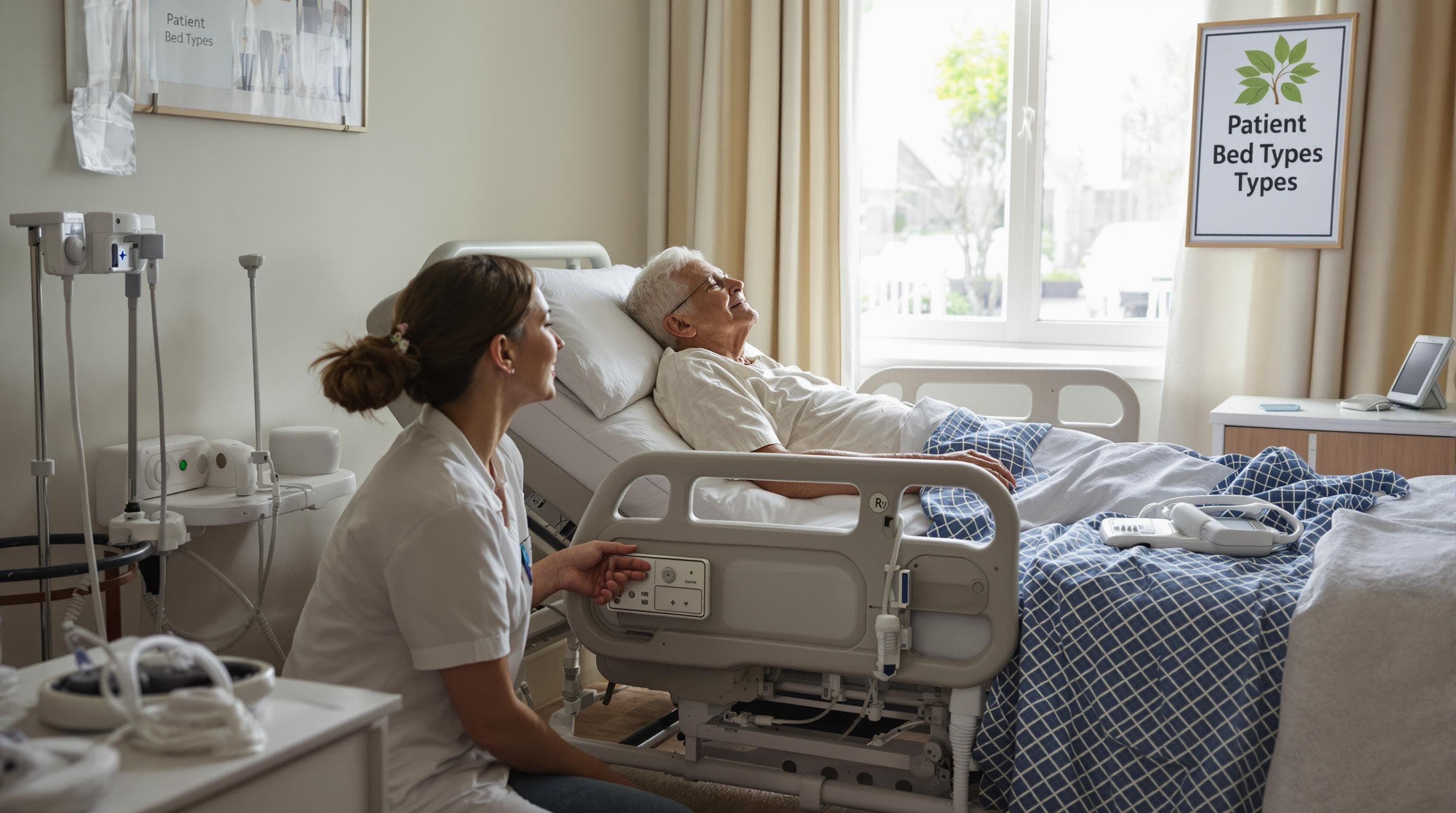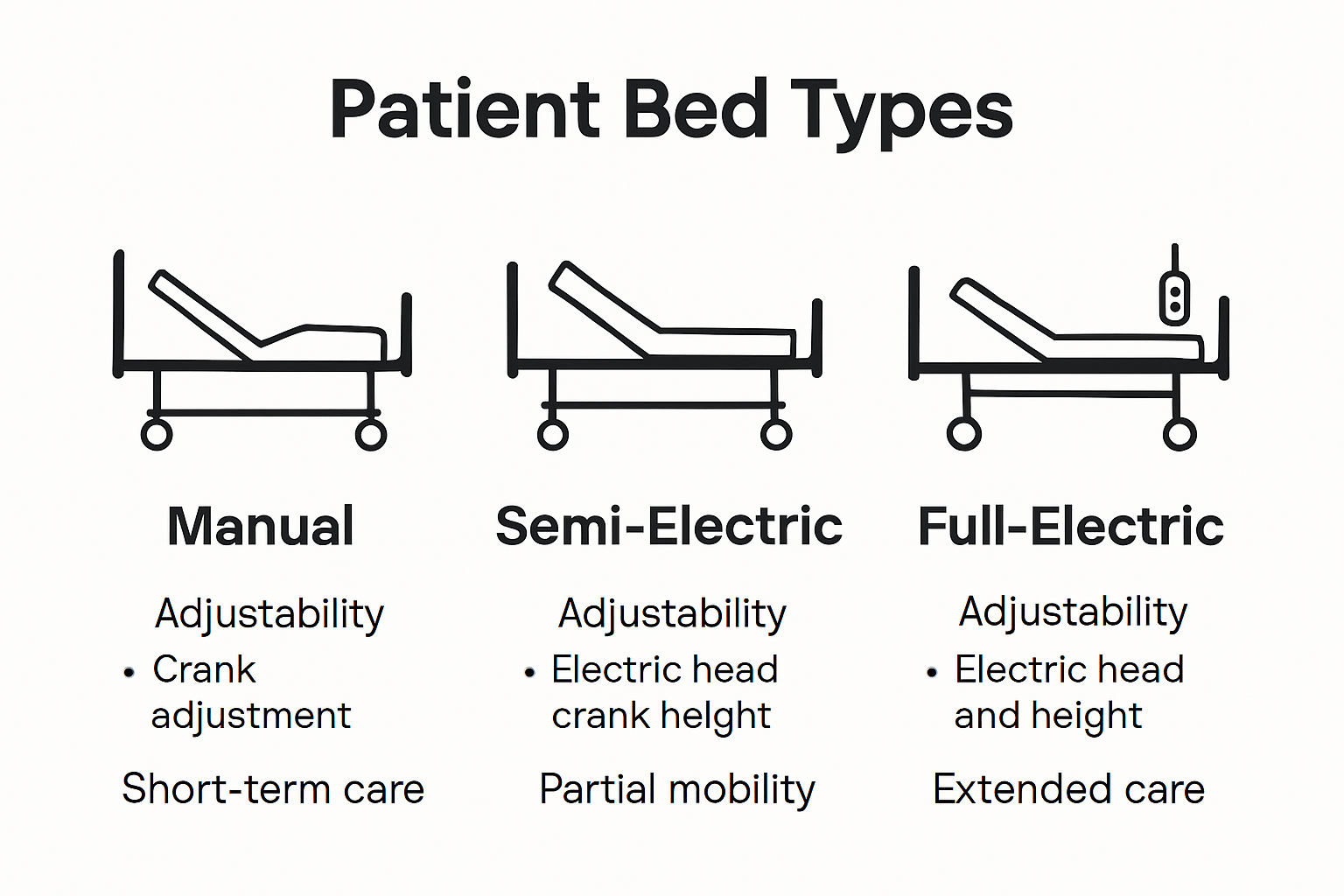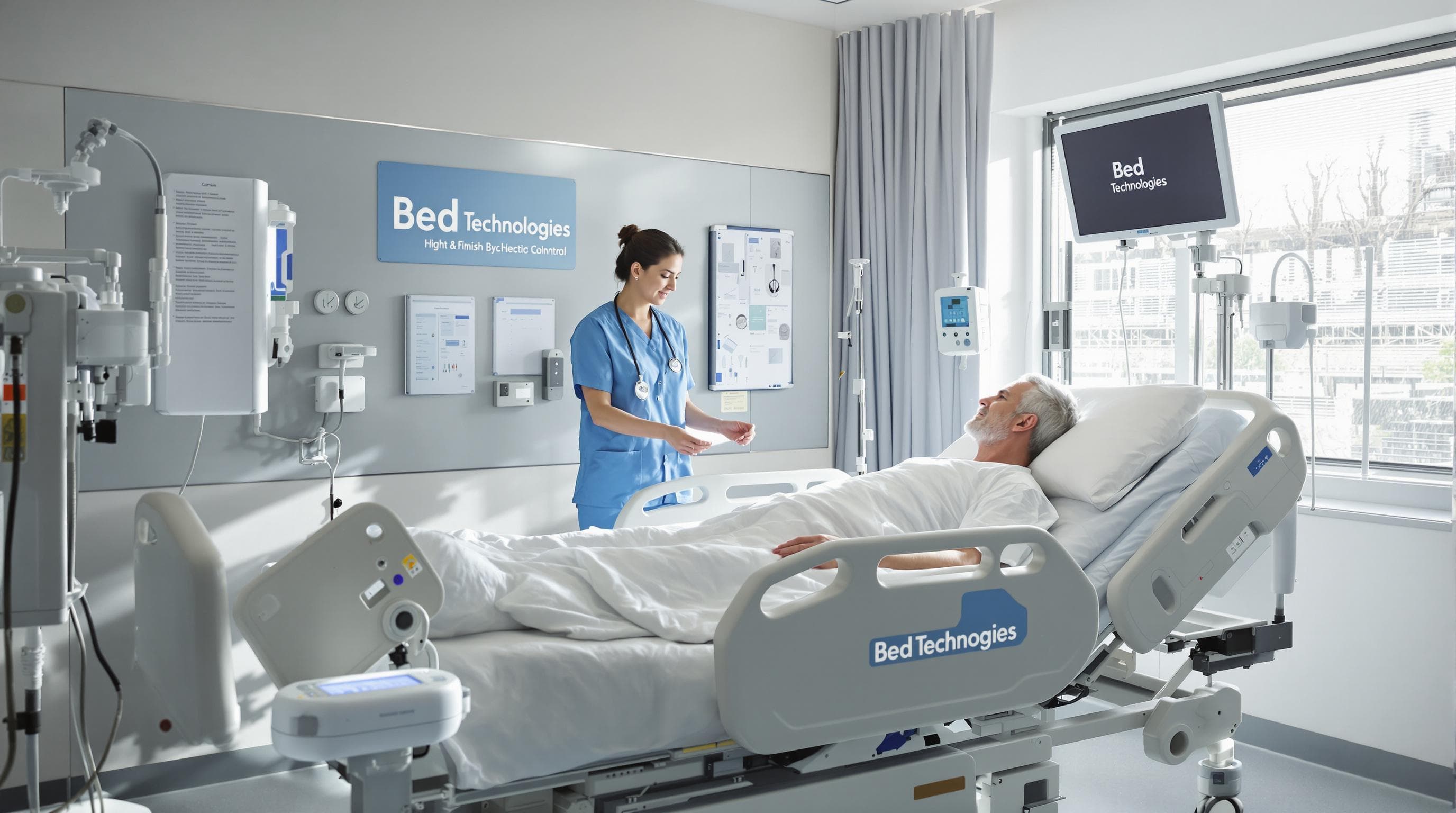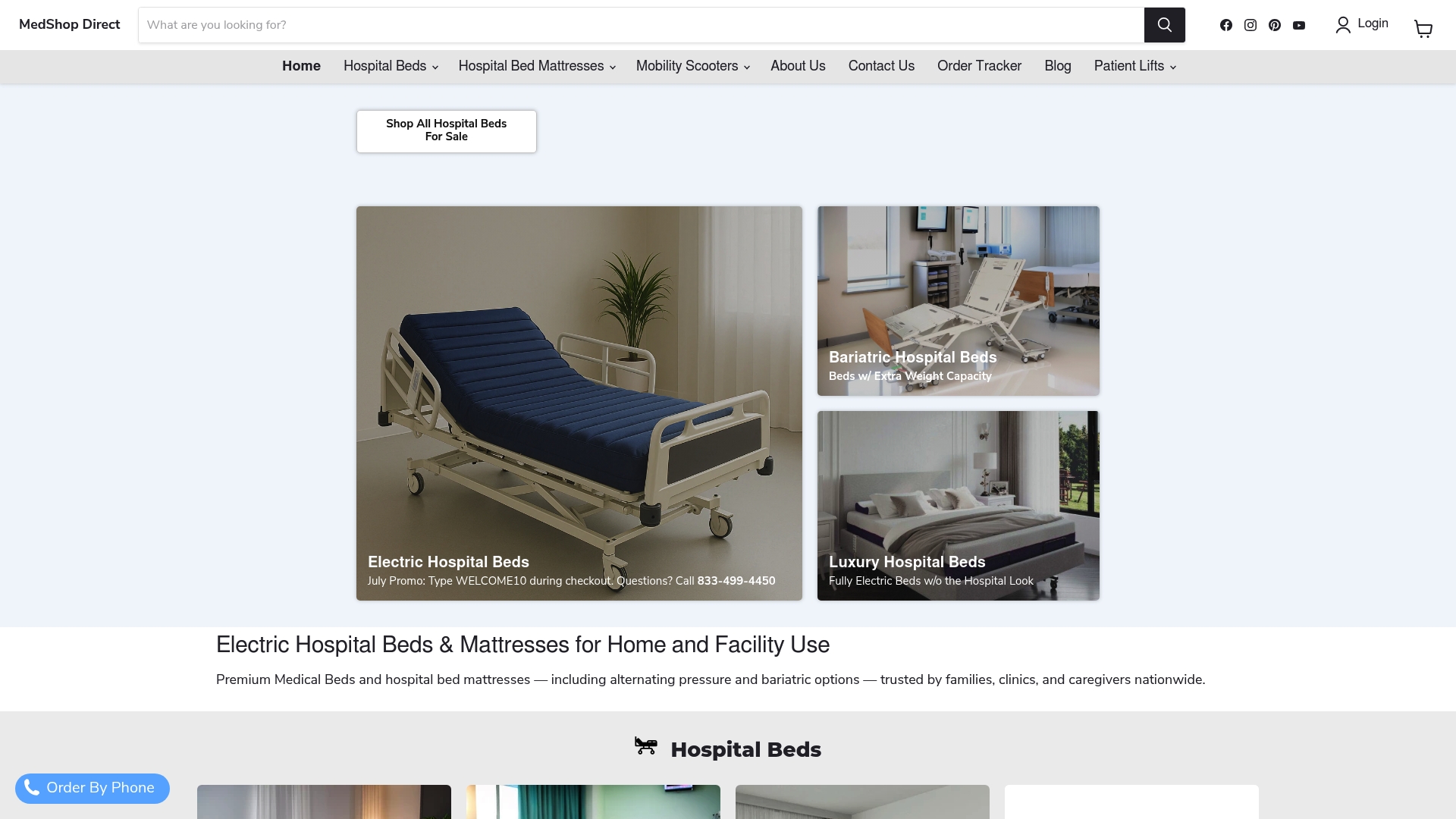

Patient beds are not just furniture. They are critical tools in care, with over 2.5 million Americans developing pressure ulcers each year due to inadequate bed support. That number is staggering, yet most people still choose beds by price or looks alone. The real difference comes from understanding the technology and features that actually protect health and comfort, and that might surprise you.
Shop all Hospital Beds for Sale
| Takeaway | Explanation |
|---|---|
| Understand Patient Bed Types | Familiarize yourself with various patient bed types, such as manual, electric, and specialized configurations, to choose the most appropriate one based on specific medical needs. |
| Consider Medical Conditions | Evaluate your medical condition and mobility limitations when selecting a bed, prioritizing features like electric adjustability and safety mechanisms. |
| Assess Financial Factors | Investigate insurance coverage options and consider the cost-effectiveness of renting versus purchasing a bed to make informed financial decisions. |
| Adapt to Home Environment | Measure your home space for compatibility with the chosen bed, ensuring adequate room dimensions and necessary electrical outlets for electric beds. |
| Utilize Bed Accessories | Enhance comfort and care through specialized accessories like advanced mattresses, positioning aids, and technological enhancements tailored to individual needs. |
Patient beds are complex medical devices designed to support patient comfort, care, and recovery across various healthcare settings. Different patient bed types address specific medical needs, mobility challenges, and treatment requirements. Understanding these variations helps patients and caregivers make informed decisions about appropriate medical equipment.

Patient beds are not one-size-fits-all solutions. Each type serves unique medical purposes and patient requirements. According to the National Institutes of Health, bed selection significantly impacts patient comfort and care quality.
Manual Hospital Beds: These traditional beds require physical adjustment using hand cranks. Caregivers manually change bed positions for patient comfort. While less convenient than electric models, they remain cost-effective for patients with minimal positioning needs. These beds typically feature:
Modern patient bed types incorporate sophisticated technologies to enhance patient care. Medical Equipment Research Center highlights the evolution of hospital bed designs toward more patient-centered solutions.
Fully electric hospital beds represent a significant advancement in patient care technology. These beds offer comprehensive electric controls for height, head, and foot positioning. Key benefits include:
Certain patient populations require highly specialized bed designs. Bariatric and pediatric beds demonstrate how medical equipment adapts to specific patient needs. American Medical Association emphasizes the importance of tailored medical equipment design.
Bariatric hospital beds provide critical support for patients with higher weight requirements. These beds feature reinforced frames, wider dimensions, and increased weight capacities. Pediatric beds, conversely, offer smaller dimensions and additional safety features specifically designed for children’ unique medical care requirements.
Selecting the appropriate patient bed involves considering multiple factors: patient mobility, medical condition, treatment goals, and potential future care needs. While technology continues advancing, the fundamental purpose remains consistent: providing safe, comfortable, and functional support for patients during their healthcare journey.
Patients and caregivers should consult healthcare professionals to determine the most suitable bed type, ensuring optimal comfort, safety, and medical support.

Selecting the appropriate patient bed requires careful consideration of multiple factors that extend beyond basic comfort. The right bed can significantly impact patient recovery, caregiver effectiveness, and overall quality of life. Understanding the nuanced selection process helps patients and families make informed decisions.
Your specific medical condition plays a critical role in bed selection. American Medical Association recommends evaluating individual health requirements before choosing a patient bed. Patients with chronic conditions like diabetes, mobility limitations, or pressure ulcer risks need specialized bed features.
For individuals with limited mobility, beds with electric adjustability become crucial. These beds enable easy position changes without physical strain. Key considerations include:
Budget and insurance coverage significantly influence bed selection. Medicare Resource Center provides guidelines on medical equipment coverage. Patients should investigate:
The physical space and home infrastructure determine bed compatibility. Home Healthcare Association emphasizes the importance of measuring room dimensions and assessing electrical requirements.
Key environmental factors include:
Caregiver input becomes equally important. Beds that facilitate easier patient transfers and reduce physical strain can prevent caregiver injuries and improve overall care quality. Consulting healthcare professionals provides personalized guidance tailored to specific medical needs.
Ultimately, selecting the right patient bed involves balancing medical requirements, financial constraints, and home environment limitations. Patients and families should approach this decision collaboratively, prioritizing comfort, safety, and long-term health outcomes.
Pressure relief and patient mobility represent critical components of effective medical bed design, directly impacting patient health outcomes and recovery processes. Understanding these features helps patients and caregivers select equipment that minimizes health risks and promotes optimal comfort.
National Pressure Injury Advisory Panel reports that pressure ulcers affect approximately 2.5 million patients annually in the United States, making pressure relief technologies essential in patient care. These injuries can develop rapidly, particularly among patients with limited mobility or extended bed rest.
Pressure-relieving technologies work through several innovative mechanisms:
Mobility features in patient beds go beyond simple positioning. National Institutes of Health research demonstrates that strategic bed positioning can significantly reduce complications associated with prolonged immobility. Modern beds incorporate sophisticated mechanisms to support patient movement and rehabilitation.
Key mobility features include:
Medical Technology Innovations Journal highlights emerging smart bed technologies that transform patient care. These advanced systems integrate sensor networks to monitor patient positioning and pressure distribution in real-time.
According to nursing-science.com, wireless sensor technologies can now detect potential pressure injury risks before visible skin damage occurs. These intelligent systems provide caregivers with immediate alerts about patient positioning, enabling proactive intervention.
Smart care beds with integrated monitoring can track:
Patients with chronic conditions like diabetes, neurological disorders, or limited mobility benefit most from these advanced pressure relief technologies. By redistributing body weight and minimizing sustained pressure, these systems help prevent serious medical complications.
Choosing the right bed involves carefully evaluating individual patient needs, understanding available technologies, and consulting healthcare professionals. While advanced features offer significant benefits, personalized assessment remains crucial in selecting the most appropriate patient support system.
Ultimately, pressure relief and mobility features represent more than technological innovations. They embody a comprehensive approach to patient care that prioritizes comfort, safety, and holistic healing.
Patient bed accessories transform basic medical equipment into comprehensive care systems, significantly enhancing comfort, functionality, and patient well-being. These specialized additions address unique medical needs and improve overall recovery experiences.
National Pressure Injury Prevention Foundation emphasizes the critical role of advanced bedding technologies in patient care. Modern accessories go beyond traditional comfort, providing therapeutic benefits.
Multilayered fabric technologies represent a significant advancement. Textile Research Journal highlights innovative fabric combinations that optimize patient comfort:
American Medical Association recommends specialized positioning accessories to prevent complications associated with prolonged immobility. These accessories provide critical support for patients with limited mobility.
Key positioning accessories include:
pubmed.ncbi.nlm.nih.gov research reveals that advanced accessories can significantly improve patient comfort. Automated turning systems and smart monitoring technologies provide unprecedented support.
Cutting-edge accessories now offer:
According to spinal cord injury research, specialized bed accessories can dramatically improve psychological well-being. These technologies transform medical equipment from mere functional tools to comprehensive care solutions.
Patients with chronic conditions particularly benefit from these innovations. Individuals with spinal cord injuries, neurological disorders, or extended recovery periods find that thoughtfully selected accessories can significantly enhance their quality of life.
Consulting healthcare professionals remains crucial when selecting bed accessories. Individual medical conditions, body mechanics, and specific recovery goals determine the most appropriate additions. While technology offers remarkable solutions, personalized assessment ensures optimal patient support.
Ultimately, patient bed accessories represent more than additional equipment. They embody a holistic approach to patient care that prioritizes comfort, healing, and individual dignity.
Here is a comparison table summarizing the main types of patient beds and their features, to help you quickly distinguish their unique strengths:
| Bed Type | Key Adjustability | Notable Features | Best For |
|---|---|---|---|
| Manual Hospital Bed | Manual (hand crank) | Basic positioning, low cost, durable | Patients with minimal needs |
| Fully Electric Bed | Electric (remote/buttons) | Adjustable height/head/foot; independence | Mobility-limited patients |
| Bariatric Hospital Bed | Electric/manual (reinforced) | Wide, high weight capacity (300-750+ lbs) | Higher-weight patients |
| Pediatric Hospital Bed | Manual/electric (child-safe) | Small size, safety rails, child features | Children with medical needs |
Additionally, the following table summarizes the main patient bed accessories and their functions for added comfort and recovery support:
| Accessory Type | Main Function | Who Benefits Most |
|---|---|---|
| Multilayered Fabric Mattress | Pressure relief, moisture control, antimicrobial | Patients at risk for pressure ulcers |
| Wedge Pillows & Cushions | Enhanced positioning and body alignment | Patients with limited mobility |
| Lateral Rotation Devices | Automatic repositioning for pressure prevention | Immobile or long-term patients |
| Wireless Monitoring Sensors | Real-time movement and pressure tracking | High-risk bedsore or falls patients |
| Temperature-Regulating Overlays | Maintain optimal body temperature | Those prone to sweating/chills |
| Integrated Massage Functions | Promote circulation, relax muscles | Patients with pain or tense muscles |
Patient beds can be categorized into four main types: Manual Hospital Beds, Fully Electric Beds, Bariatric Hospital Beds, and Pediatric Hospital Beds. Each type serves unique medical needs and patient requirements.
Selecting the right patient bed involves considering your medical condition, mobility limitations, financial aspects, and home environment. It’s important to consult healthcare professionals for personalized recommendations based on your specific needs.
To prevent pressure ulcers, look for beds with pressure-relieving technologies, such as dynamic surface redistribution and air cell technology. Beds that allow for easy adjustments and enhancements like integrated lateral rotation devices can also help.
Yes, various accessories can enhance comfort, such as multilayered fabric mattresses for pressure relief, wedge pillows for positioning, lateral rotation devices for automatic repositioning, and wireless monitoring sensors to track movement and pressure.
There is a lot at stake when choosing a patient bed. The article highlighted how the right bed directly affects safety, comfort, and recovery—especially if you are worried about pressure ulcers, mobility challenges, or the need for specialized support. At MedShop Direct, we understand that trying to navigate options like electric adjustability, pressure-relief systems, and unique bed accessories can seem overwhelming, especially when comfort and health are on the line.

Do not leave your loved one’s care up to chance. Discover how MedShop Direct empowers you with hospital beds, hospice beds, alternating pressure mattresses, and all the compatible accessories inspired by the needs discussed in your guide. Our easy-to-use shopping platform, trusted customer reviews, and expert support help you quickly find solutions tailored to your space and medical requirements. Start browsing our online selection today and give yourself peace of mind with a setup designed for real comfort and safety. Make your decision now and let MedShop Direct be your reliable partner in advanced patient care.
placeholder